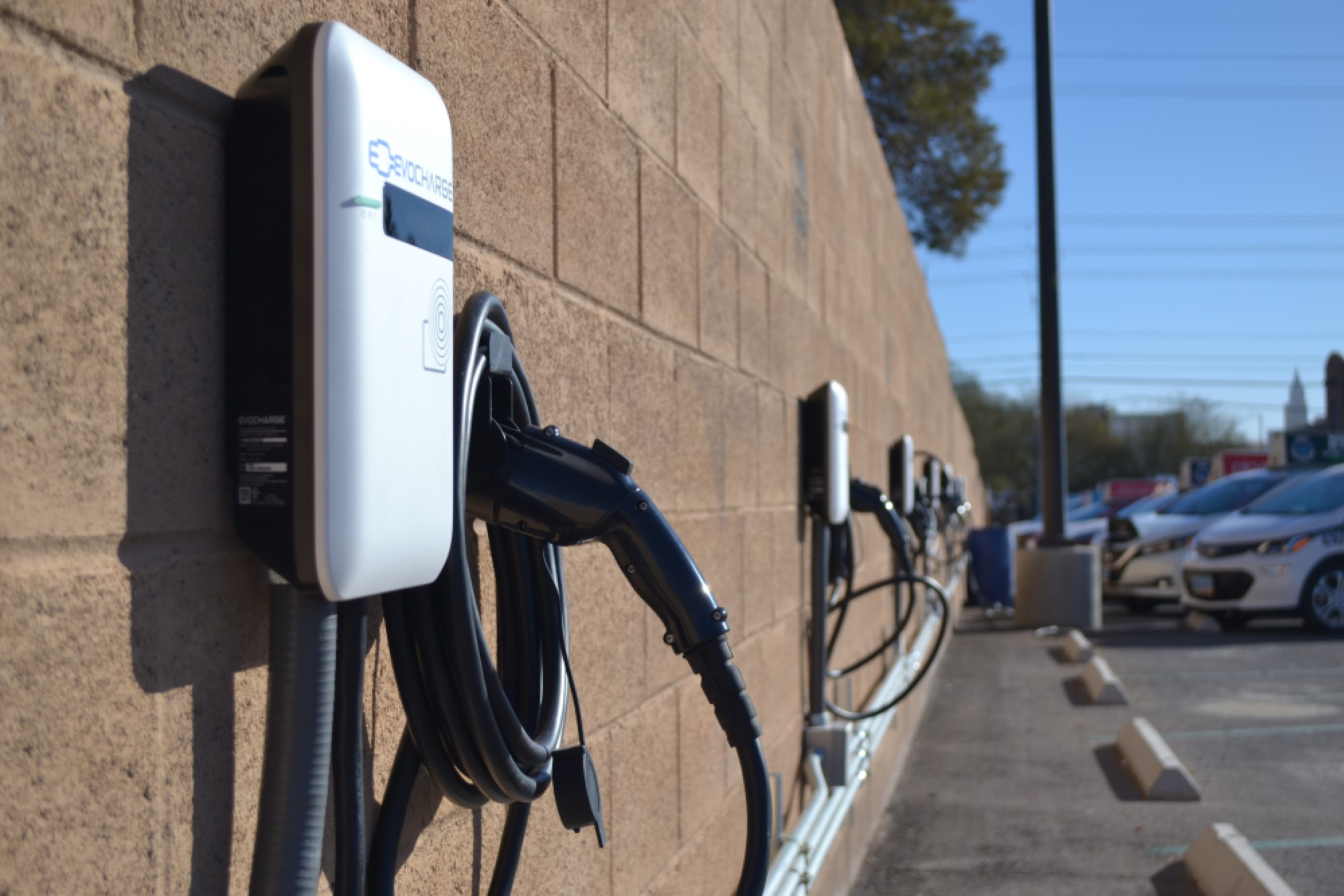The Rise of U.S. Charging as a Service: Trends and Insights

The electric vehicle revolution is accelerating across the United States, and with it, the demand for convenient, efficient, and accessible charging infrastructure is skyrocketing. One of the most significant developments in this space is the emergence of Charging as a Service or CaaS. This model is transforming how consumers, businesses, and municipalities approach electric vehicle charging by shifting from a product-based to a service-based solution. In this article, we explore the rising trends and insights shaping the U.S. Charging as a Service market, highlighting the factors driving its growth, the challenges it faces, and what the future holds.
Explosive Growth Forecast for the U.S. Charging as a Service Market
The United States is rapidly transforming its energy landscape, driven by the rise of electric vehicles and a growing commitment to sustainability. Among the key developments fueling this transformation is the Charging as a Service (CaaS) model, which is gaining significant traction. According to market insights, the U.S. charging as a service market is expected to grow remarkably, with its size predicted to reach approximately fourteen billion five hundred seventy million US dollars by the year two thousand thirty two. This growth represents a compound annual growth rate of over thirty percent from its estimated value of just over two billion three hundred million US dollars in two thousand twenty five. Such robust expansion highlights the immense opportunity for businesses willing to engage in this evolving market.
Understanding Charging as a Service
Charging as a Service refers to a business model where charging infrastructure is provided and managed as a comprehensive service rather than a one-time product sale. This means that customers such as fleet operators, businesses, and even residential communities can access electric vehicle charging without the upfront costs and operational burdens associated with installing and maintaining the hardware themselves. The service provider takes care of everything including installation, maintenance, software management, payment processing, and sometimes even energy procurement. This approach allows customers to focus on their core activities while ensuring their electric vehicles remain charged efficiently.
Why the U.S. is Embracing Charging as a Service
Several key factors are fueling the adoption of Charging as a Service in the U.S. First, the rapid increase in electric vehicle sales has created pressure on existing charging infrastructure and highlighted the need for more accessible and reliable charging options. Second, businesses and fleet operators are seeking cost-effective solutions to electrify their vehicle fleets without large capital expenditures or complex infrastructure management. Third, government incentives and policies supporting clean energy and reduced emissions are encouraging investments in EV infrastructure, making service-based models more attractive.
Another important driver is technological advancement. The integration of smart charging technology, cloud-based management platforms, and real-time data analytics enables providers to offer optimized, user-friendly services. These technologies help manage demand, reduce energy costs, and enhance the overall user experience. Additionally, consumers increasingly prefer flexible, subscription-style access models over ownership of expensive equipment, mirroring trends seen in other sectors such as software and mobility services.
Key Trends Shaping the Charging as a Service Landscape
The U.S. Charging as a Service market is being shaped by several prominent trends that define its current trajectory and future potential.
First, there is a surge in fleet electrification. Commercial fleets including delivery vans, ride-sharing vehicles, and municipal transport are rapidly transitioning to electric power. These fleets benefit greatly from CaaS because it removes the need for upfront infrastructure investments and offers tailored charging solutions based on usage patterns.
Second, partnerships between utility companies and CaaS providers are becoming more common. Utilities play a critical role in ensuring grid reliability and managing energy demand, and by collaborating with service providers, they can better integrate EV charging into the overall energy ecosystem. These partnerships also pave the way for demand response programs and dynamic pricing models that benefit both operators and consumers.
Third, there is a growing focus on expanding charging access in multi-unit dwellings and workplaces. Many electric vehicle owners lack convenient access to home charging, especially those living in apartments or condos. CaaS models provide turnkey solutions for property managers, enabling them to offer charging amenities without complex investments or disruptions.
Fourth, sustainability remains a core theme. Providers are increasingly incorporating renewable energy sources and energy storage solutions into their charging networks. This not only reduces carbon footprints but also helps mitigate grid stress during peak times.
Challenges and Considerations for the U.S. Market
Despite the promising outlook, Charging as a Service faces several challenges that stakeholders must navigate carefully.
One major issue is the fragmented regulatory environment. Different states and municipalities have varying rules and incentives related to EV infrastructure, creating complexity for service providers operating across multiple jurisdictions. This fragmentation can slow deployment and increase costs.
Another challenge is the need for standardized technology and interoperability. Electric vehicle charging involves various hardware types, communication protocols, and payment systems. Lack of standardization can lead to customer frustration and operational inefficiencies. The industry is actively working on developing common standards, but progress remains gradual.
Grid capacity is also a critical concern. As EV adoption grows, the demand on local electricity grids will increase significantly. Without proper planning and investment in grid modernization, there is a risk of overloading infrastructure, leading to outages or the need for costly upgrades. CaaS providers must coordinate with utilities and regulators to ensure reliable service.
Finally, the upfront cost of deploying new charging stations, even under a service model, can be substantial. Providers need to balance pricing strategies to remain competitive while achieving profitability. Securing financing and managing cash flow will continue to be important.
The Role of Technology in Driving Innovation
Technology innovation plays a pivotal role in accelerating the Charging as a Service market. The integration of Internet of Things devices, artificial intelligence, and cloud computing allows providers to optimize charging operations and enhance user convenience.
Smart charging systems enable dynamic load management, which balances the electricity demand from multiple vehicles to prevent grid overload and reduce energy costs. AI algorithms can predict peak usage times and adjust charging speeds accordingly, improving efficiency.
Mobile apps and digital platforms make the user experience seamless by offering real-time station availability, reservation options, automated payment processing, and loyalty rewards. These features help build customer loyalty and encourage EV adoption.
Furthermore, blockchain technology is beginning to be explored for secure and transparent transactions, especially for peer-to-peer charging scenarios and energy trading within local grids.
Implications for Consumers and Businesses
For consumers, the rise of Charging as a Service means easier access to reliable EV charging without the need to invest in costly home chargers or worry about maintenance. Subscription plans and pay-per-use models offer flexibility and convenience. As networks expand, charging stations will become more widespread, reducing range anxiety and supporting long-distance travel.
Businesses stand to benefit significantly from adopting CaaS. Commercial fleets can accelerate electrification efforts without capital expenditures, reducing total cost of ownership. Retailers and property owners can attract environmentally conscious customers by providing charging amenities. Utilities and municipalities gain tools to manage energy demand more effectively and support community sustainability goals.
Looking Ahead: The Future of U.S. Charging as a Service
The U.S. Charging as a Service market is on a strong upward trajectory, driven by technological innovation, regulatory support, and increasing electric vehicle adoption. Over the next decade, we can expect several key developments:
- Expansion of nationwide charging networks with integrated renewable energy sources.
- Increased collaboration between private providers, utilities, and government agencies to streamline deployment and optimize grid management.
- More sophisticated service offerings including bundled energy management, vehicle-to-grid integration, and advanced analytics.
- Greater focus on equity and accessibility ensuring underserved communities and multi-family housing residents have access to charging infrastructure.
- Evolution of business models with flexible pricing, subscription tiers, and enhanced customer engagement.
As these trends unfold, Charging as a Service will play a crucial role in supporting the broader transition to sustainable transportation in the United States. It offers a scalable, user-centric, and financially viable pathway to meet the growing demand for electric vehicle charging while addressing the challenges of infrastructure deployment and grid management.
Conclusion
The rise of Charging as a Service in the U.S. marks a significant shift in how electric vehicle charging infrastructure is delivered and consumed. With a market poised to grow by more than six times in less than a decade and a compound annual growth rate exceeding thirty percent, this service-based model is becoming a vital component of the EV ecosystem. It offers flexibility, reduces barriers to entry, and enhances operational efficiency for all stakeholders involved.
Driven by increasing EV adoption, supportive policies, technological innovation, and strategic partnerships, the future of Charging as a Service looks promising. While challenges related to regulation, standardization, and grid capacity remain, the industry is rapidly evolving to address these issues.
For consumers, businesses, utilities, and governments alike, embracing Charging as a Service opens new opportunities for sustainable growth and cleaner transportation. As the United States moves closer to its clean energy goals, Charging as a Service will undoubtedly be at the forefront of this transformation.
For more in-depth analysis and related market reports, explore our collection of expert insights and industry research.
- 5G Network Equipment Market Size, Trends, Share, Growth, and Forecasts, 2025 - 2032
- Smart Cities Market Size, Trends Share, and Growth Forecasts, 2025 - 2032
- Fiber Optics Market Size, Share, Growth, and Regional Forecast for 2025 - 2032
- Rugged Thermal Cameras Market Size, Share, Growth, and Regional Forecast for 2025 - 2032
Note: IndiBlogHub features both user-submitted and editorial content. We do not verify third-party contributions. Read our Disclaimer and Privacy Policyfor details.







